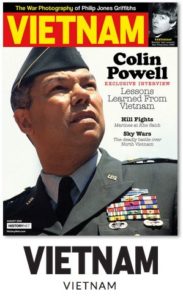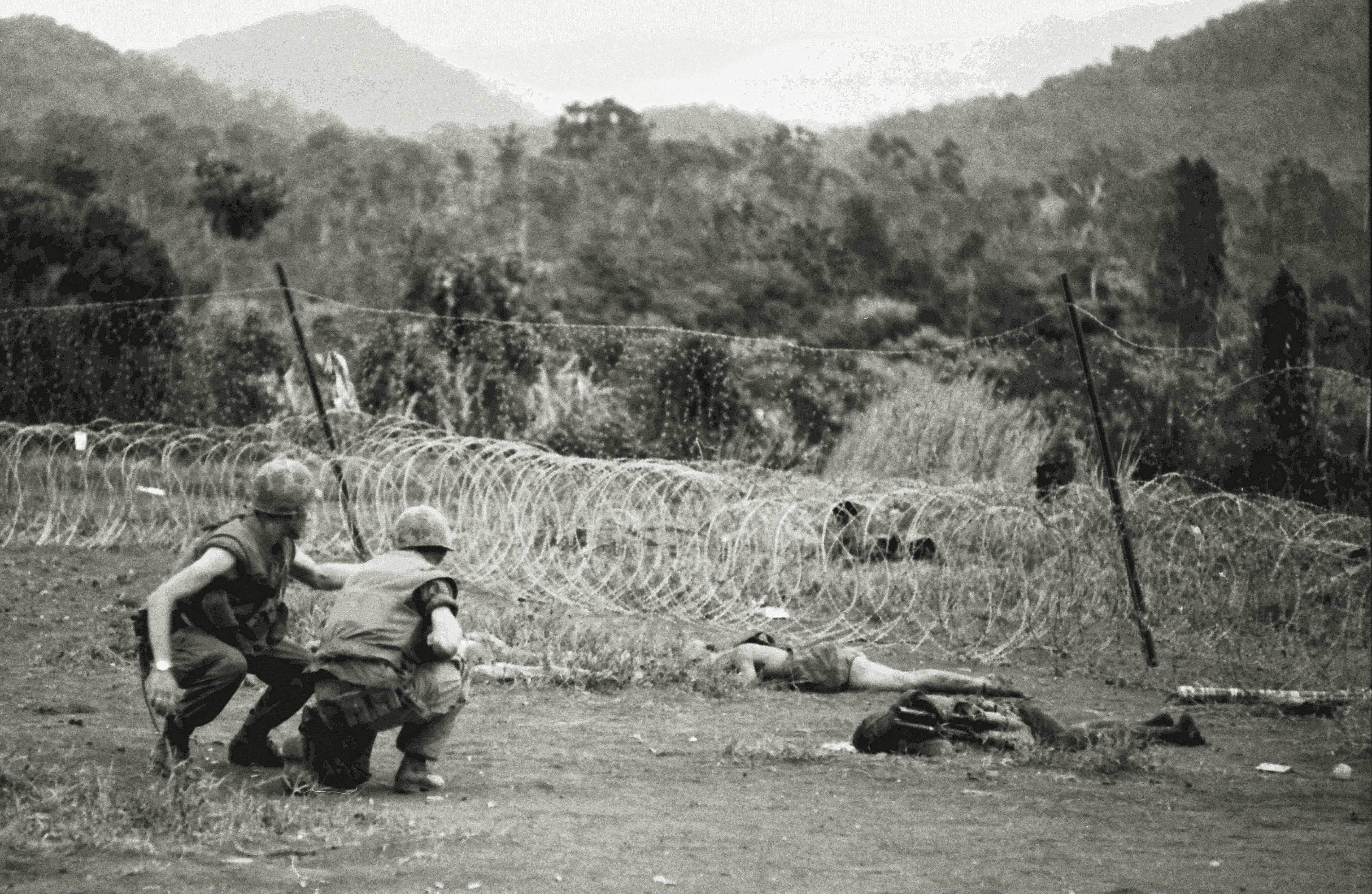I have distinctive memories of that night, Nov. 30, 1969. First, time seemed to slow down. That often happens to people in life and death situations. A person’s reflexes become extraordinarily sharp. After the life and death experience is over, sometimes the person’s mind goes into a kind of mental fog, which in my case lasted about a week.
I was not supposed to be in that situation. I was trained to be a clerk and stationed “behind the lines” at Dong Ba Thin Base Camp near Cam Ranh Bay, about 200 miles north of Saigon. Men in the infantry, artillery and armored units on the front lines bore the brunt of combat and suffered most of the casualties. They did not do all the fighting, however. Seven months after I entered the Army, I found myself behind an M60 machine gun when the enemy penetrated our perimeter while I was on duty in a guard tower as a private first class with the 18th Engineer Brigade (Combat).
We were attacked by sappers, the most highly trained of all North Vietnamese Army and Viet Cong forces, similar in toughness to our Special Forces. Sappers (in Vietnamese “dac cong,” meaning “special task”) reported only to a sapper command, which in turn reported to North Vietnam’s Politburo ruling body.
Their specialties were explosives and stealthy infiltration tactics. Sappers built mock-ups of each base they targeted and rehearsed every mission down to the tiniest detail. Each sapper knew exactly what he was supposed to do in the mission and always had a specific target. Sappers were not there to be killed. They were there to accomplish their mission and quickly escape. In our case, they wanted to plant a devastating bomb in the base.
The major units at Dong Ba Thin were headquarters 18th Combat Engineer Brigade, headquarters 35th Engineer Group, headquarters 10th Combat Aviation Battalion, 183rd Aviation Company, 243rd Assault Aviation Company, 92nd Assault Helicopter Company and 608th Transportation Company. The 18th Combat Engineers had about 225 enlisted men and 53 officers. The other units had about 50 to 70 men.
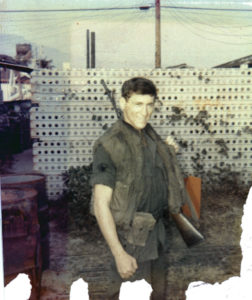
The sappers who sneaked into our base carried a Bangalore torpedo (a tube with explosives) about 5 to 6 feet long with 75 cakes of powerful C-4 plastic explosives lashed in with vine. C-4, a precious commodity to our communist opponents, was usually stolen from U.S. forces.
Many of us believe the sappers’ intention on Nov. 30 was to place this powerful explosive under the trailer of Brig. Gen. John W. Morris, commander of the 18th Combat Engineer Brigade, sleeping 100 yards behind my guard tower. This bomb was powerful enough to flatten half a city block. Three experts, including combat engineer Master Sgt. Tony Lawson who was well trained in C-4, told me the bomb would have had an effective lateral killing range of about 100 yards, especially from its planned space beneath a trailer.
Jerry Laws, a captain in 18th Combat Engineer Brigade’s aviation section (and future brigadier general), told me, “That bomb would have taken out our whole officers’ area.” The blast would have killed Morris and most, if not all, of the 53 officers sleeping in our area and many of the 225 enlisted men asleep nearby.
That night was an important night in all of our lives. We remember it as if it happened yesterday. The sappers struck Dong Ba Thin at 11:30 p.m. The moon was at two-thirds full brightness. Normally, those weren’t suitable conditions for a successful sapper attack. The moon seemed too bright. We could see the perimeter wire clearly. And the hour was too early. Many of our men were still awake, alert and likely to spot the intruders before they could plant their explosives.
I was in the guard tower playing with my rifle’s Starlight night scope, which fascinated me. I was constantly aiming it into the area around my tower. Sappers were trained to slip between guard towers and move when both guards were looking away from them. If a guard turned their way, they would freeze. A sapper lying flat and motionless could not be seen by a guard at a hundred yards—unless the guard was using his Starlight scope.
The next morning I learned that the entire squad of sappers had mashed down the elephant grass a hundred yards to my right and planned to come in at a point that was barren and dark with no troop quarters. Instead, they decided to move 300 yards to my right. Perhaps they saw me using the scope and moved out of my range.
It turned out to be a bad move. The sappers came in directly behind the sleeping quarters and showers of the 183rd Aviation. Spc. 5 Jim Benoit was taking a late shower as the sappers headed straight toward Morris’ trailer. Benoit made a noise that spooked one of the unseen sappers into chambering a round in his AK-47 assault rifle. Spc. 4 Butch Graef, a mechanic with the aviation company, manning the guard tower to my right, instantly recognized the distinctive “double-click” sound as the weapon’s bolt opened and slammed shut. He immediately threw a spotlight on the noise.
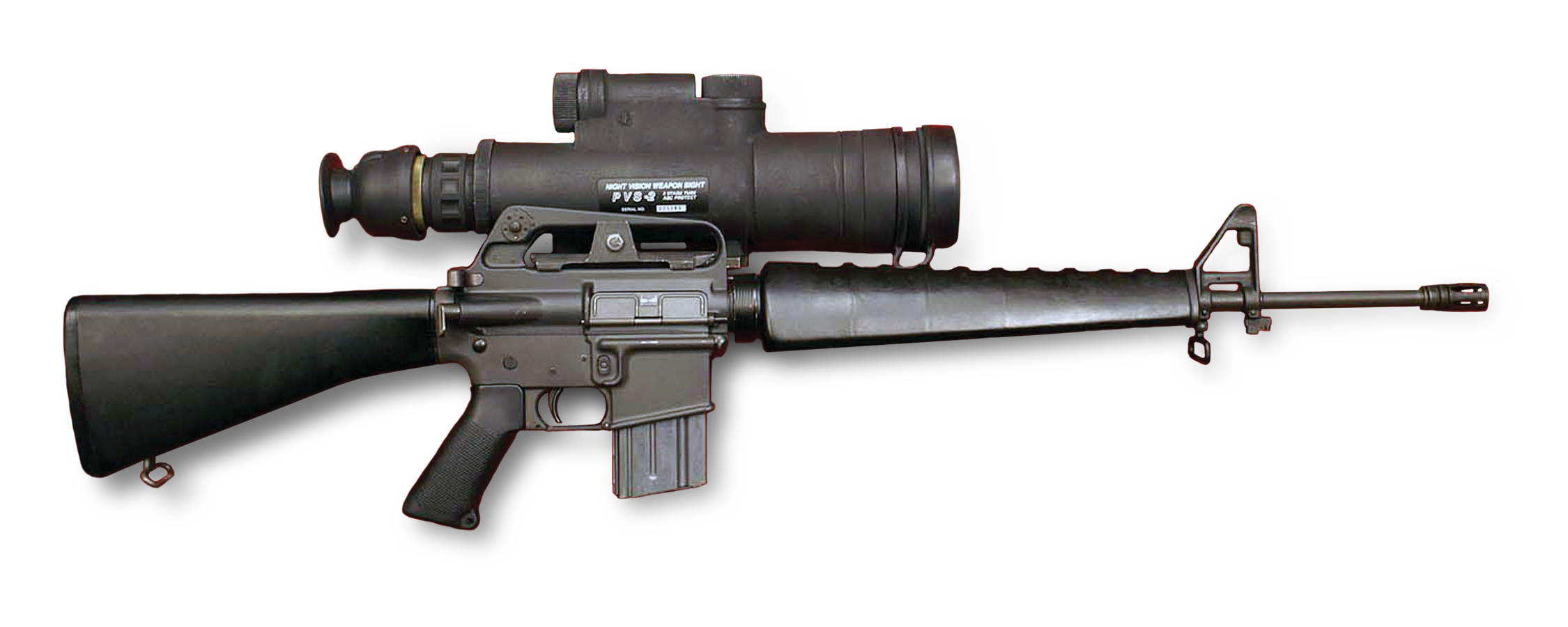
The sappers knew their mission was fatally compromised but had a plan for a quick escape. They threw a hand grenade at Graef, fired a rocket-propelled grenade at the latrine next to Benoit’s shower and immediately set off satchel charges (several pounds of high explosives carried in a canvas bag) in several hootches and under the 183rd Aviation Company’s generator. They wounded both guards on duty with Graef—Spc. 4 James Dorough and Spc. 4 Frank Robertson—as well as Capt. Allen Hodgson of the 183rd Aviation Company and two others.
At first, my comrades and I thought we were getting bombarded by mortars. A satchel charge explosion sounds like a fired mortar round. The sappers used satchel charges the night of the attack not only to kill and wound but also to deceive us into thinking we were just under another mortar attack. We had been hit with so many mortar rounds that we became numb to the sound of those explosions. We were frequent targets because our base was close to the hills, which meant the enemy could quickly fire mortar rounds into the base and then disappear.
Dong Ba Thin was a particularly attractive target because it was full of helicopters, which the enemy hated because of their firepower. Sometimes the communists would fire as many as 50 mortars and six rockets at one time. On at least one occasion we were hit twice in the same night.
We feared the rockets the most. One night a rocket destroyed the 92nd Assault Helicopter Company’s mess hall. This blow would have killed and wounded many men if the mess been occupied. Other times we weren’t as fortunate. We frequently lost men to rockets and mortars, and many were wounded.
Morris, in his memoirs, recalled that Viet Cong fired a couple of rounds at us every couple of nights and wrote: “We suffered more casualties than any unit in Vietnam three of the 12 months I was there.”
I had been in Vietnam only one week when I experienced a mortar attack on my very first night of guard duty. A few minutes before 6 p.m. I was looking out over my company when I saw the first mortar explode, about a half second before I heard it. The shell hit near the mess hall, close to where several soldiers were walking.
Another evening a visiting lieutenant general was eating in the officer’s mess hall with Morris when the Viet Cong fired six rockets at the mess hall. I was standing nearby. The rockets flew directly over my head and exploded about 250 feet away. Thankfully they missed the general. If you have ever heard a rocket whistle, it’s a sound you can never forget. Even today, every time I hear a car backfire or the first bolt of lightning, my heart races and I often duck.
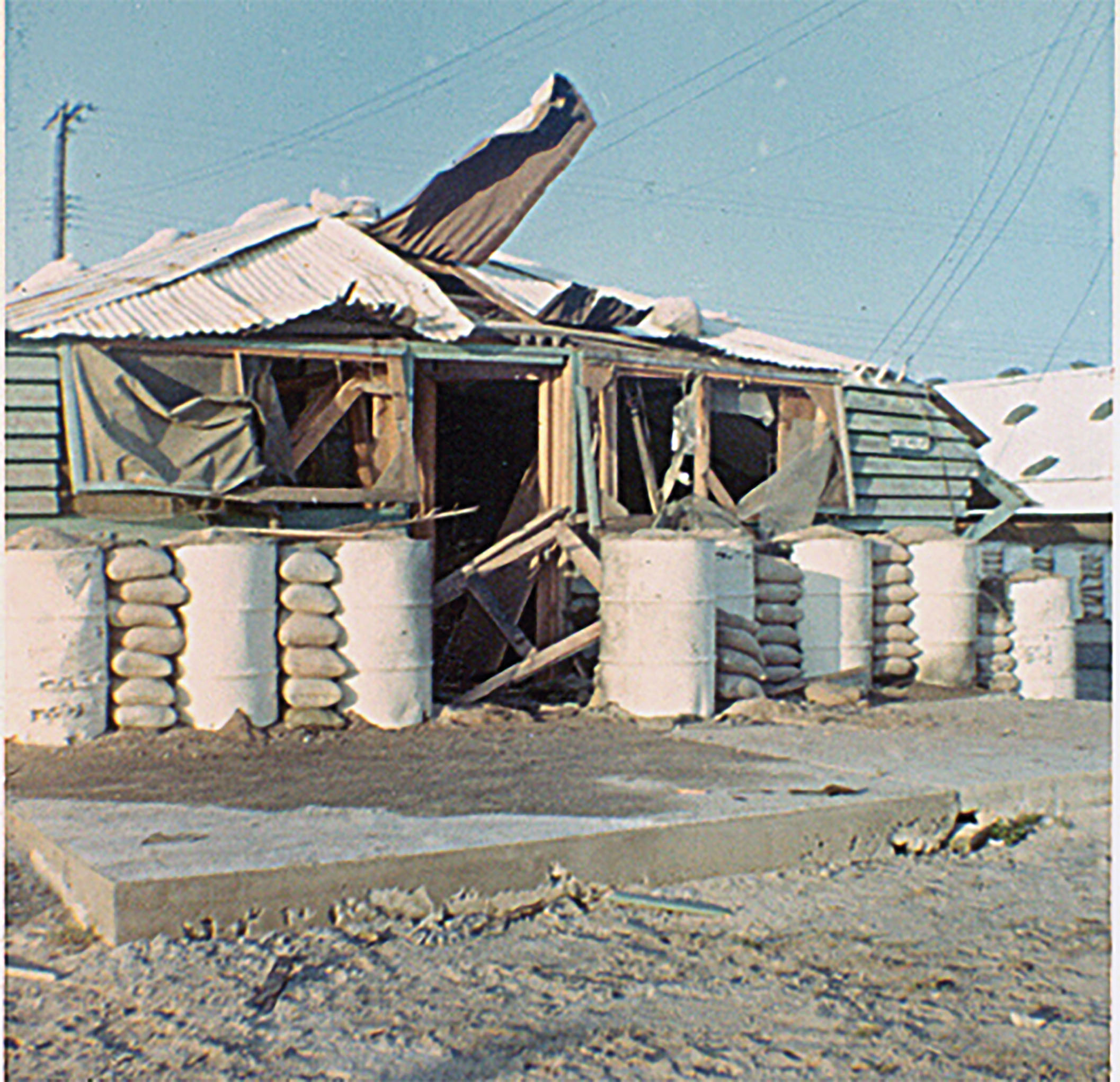
The sappers who attacked Dong Ba Thin on Nov. 30 knew that when we got hit by mortar fire we would dive for the ground and hug the concrete until the “all clear” blare from our sirens signaled us to run for positions on the perimeter. That night the sappers wanted us to hug the concrete for a couple of minutes to allow them to escape through the holes in the wire they had cut earlier.
I heard a few rifle rounds fired, but thought they were firecrackers. Laws, our aviation captain, instantly recognized the noise as rounds fired from an AK-47. Although the sirens were still blaring for all soldiers to hug the concrete during a mortar barrage, he knew we were under a direct assault by enemy foot soldiers. Laws donned his flak jacket, grabbed his rifle and helmet and raced to the guard tower to my left. He started firing the tower’s machine gun, clearly indicating that we were under a sapper attack, not mortar fire. Thanks to Laws’ quick action, our attack helicopters got in the air quickly.
Graef, in his tower, was also firing a machine gun. When it jammed, he stood up in the tower with an M14 rifle (we did not get the newer M16s until two months later) and took on 10 sappers. Anyone who has been in combat knows how much guts that takes. Graef’s extraordinarily brave decision to stand and fight the sappers saved the lives of many American soldiers.
The sappers who infiltrated the base escaped through the perimeter wire and ran back toward the elephant grass. Graef shot one of them in the knee before the sappers got to the wire. Trails of blood seem to indicate that others were hit before they got to the elephant grass.
The man wounded in the knee was the sappers’ leader. He was also a South Vietnamese army captain. Supposedly one of our allies! We had been teaching him to be a pilot. He visited the base many times and knew the layout well. Now he had revealed his treacherous intentions.
The other sappers tried to drag him to motorcycles hidden a short distance from the base for a fast getaway along a nearby creek. The sappers’ efforts to save their leader and the wounds of others slowed their escape. Just two extra minutes would have given them time to vanish into the hills.
But the rescue attempt had cost them too much time. Laws, Graef, Spc. 6 Leo Farrell, Spc. 4 Mike Buttolph, Spc. 4 Mark Mitchell, Spc. 5 Terry Hackney, Spc. 4 Wesley Smith and many others fired rifles and machine guns into the elephant grass.
Another distinctive memory of that night is the moment when two of our attack helicopters found the enemy and fired their miniguns into the small area for about five minutes.
I knew then that the fight was over and was very glad. But I also knew we had just killed men who would never return home. Nine sappers died that night. Their wounded leader was found the next morning. Three of our men killed him.
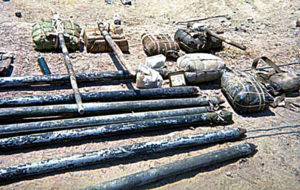
Several soldiers of the 183rd Aviation Company, including Benoit, Mitchell and Hackney volunteered for a perimeter sweep. During the sweep Mitchell stumbled upon the huge Bangalore torpedo, hidden under matted-down elephant grass. The sappers had tried to take it with them after the aborted mission at our base. If Graef had not blown out their leader’s knee and slowed their rush to the hills, the attackers would have escaped with all of that C-4 to use against American soldiers somewhere else.
Had the sappers been successful, they might have killed our general and killed or wounded possibly 53 officers, as well as 100 or more enlisted men, making the battle at Dong Ba Thin the worst attack on a U.S. base during 1969. Families back home would have been devastated. Those of us in support positions rather than combat units were thought to be behind the lines. Our families believed we were relatively safe.
Because we thwarted the sappers’ plans, the fight at Dong Ba Thin is not well known today, even among historians. However, I believe it is an important event in the war based on research I did to answer questions that troubled me.
Why did the sappers attack at 11:30 p.m. and not 2 a.m., when the moon would be waning and more of the base would have been asleep? Especially when they were outnumbered 100 to 1. They were clearly at a tactical disadvantage. And why did they, or rather their North Vietnamese leaders, choose Nov. 30, 1969, to mount such a risky attack?
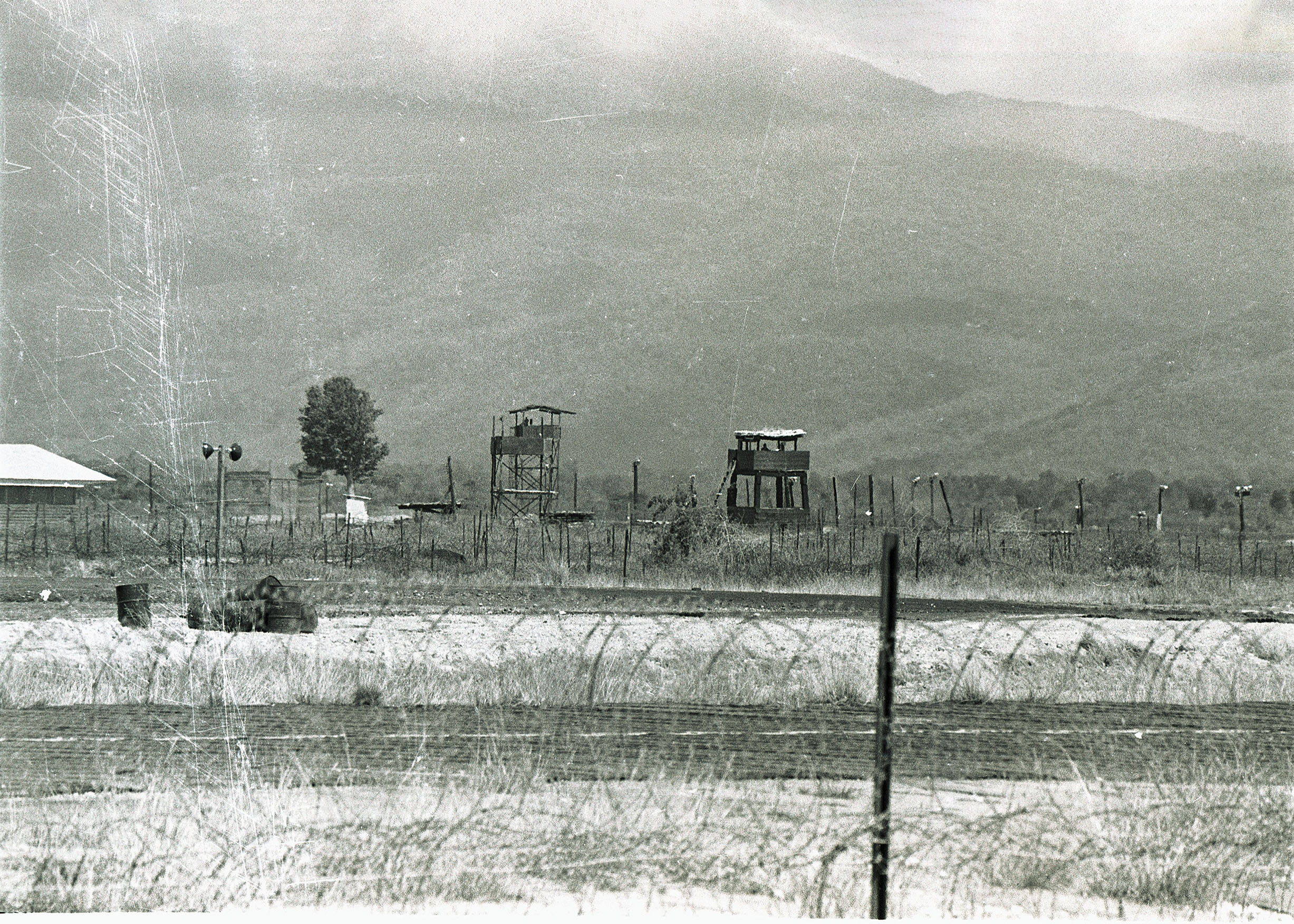
I analyzed 25 sapper attacks during the Vietnam War and compared them using an astronomical website that provides data on past moon phases. Only one of those sapper attacks occurred during a bright moon. Furthermore, none of the 25 attacks happened at a time as early as ours.
Many of us at Dong Ba Thin that night believe the date and time were picked to coincide with an event taking place halfway around the world. On Dec. 1, 1969, the U.S. Selective Service System conducted the first Vietnam draft lottery at its headquarters in Washington—a momentous event in the history of the war. The lottery was President Richard Nixon’s effort to make the draft fairer and quiet the anti-war demonstrations. Protests against the war were at their peak in November 1969, and the North Vietnamese did not want them to diminish.
It seems clear that North Vietnam intended to launch a high-casualty attack that would gain more attention in the press than the introduction of a more equitable draft procedure and thus fuel more anti-war protests. The sappers likely struck earlier than usual because it would take about 14 hours for the news to reach the United States, get printed and delivered to front doors. Despite the Vietnam War’s reputation as the “first television war,” daily newspapers were still the dominant news source for the American public.
In two long telephone conversations, Laws discussed what he believes is another reason for the Nov. 30 attack. The North Vietnamese wanted to use it as leverage in the Paris Peace talks. North Vietnam may have believed that a ferocious attack against an American base would force Nixon to soften his hard-line position to reach a deal that would get all American forces out of Vietnam. They also knew that Nixon might do just the opposite: Respond with overwhelming force, escalating the war. However, North Vietnam’s leaders had decided to endure whatever force Nixon might throw at them.
We were lucky that night. I spent 65 nights, a total of 780 hours, on a guard tower in Vietnam, and I know how lucky we were. Good soldiers and good luck averted a massive tragedy in November 1969.
Capt. Paul Walker, the 183rd Aviation Company’s information officer, ended his after-action report this way: “Charlie [the sappers] had been repelled, but not by a combat infantry force. He had been stopped by cooks, supply personnel, mechanics, clerks and courage. Yes, by raw courage, for there was magnificent courage displayed in the face of the enemy.”
Walker’s comment reminds me of what we were all told in basic training. The sergeants said that when we entered combat each one of us would do one of the “three F’s”—freeze, flee or fight. They added that it was their job to teach us to fight. Our sergeants had done their job well.
Graef was awarded the Bronze Star for valor. There was talk that he deserved a Silver Star. I wholeheartedly agree. Although more than 50 years have passed, he could still be recommended for a Silver Star.
Buttolph also received a Bronze Star. He was honored for exposing himself to enemy fire while carrying a machine gun to Graef’s tower after the guard’s machine gun had jammed.
Walker’s assessment was correct. Laws, Graef, Benoit, Mitchell, Buttolph and a lot of other men showed a lot of raw courage that moonlit night. Although unknown to us at the time, we may also have had an important part in keeping that awful war from escalating. V
Randy Bullock served in Vietnam Nov. 15, 1969-Nov. 4, 1970, as a private first class, then a specialist 4. For the first three months, he was a personnel clerk with the 18th Combat Engineer Brigade, then was transferred to the brigades’ aviation section where his duties included manning radios and occasionally flying as a door gunner on Huey helicopters. After the war, he was a residential contractor, building homes and garages. He lives in Killen, Alabama.
This article appeared in the June 2021 issue of Vietnam magazine. For more stories from Vietnam magazine, subscribe here and visit us on Facebook:
